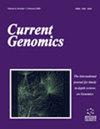ResUbiNet:用于泛素化位点预测的新型深度学习架构
IF 1.4
4区 生物学
Q4 BIOCHEMISTRY & MOLECULAR BIOLOGY
引用次数: 0
摘要
简介泛素化是一种独特的翻译后修饰,在蛋白质降解、信号转导、DNA 修复和细胞周期调控等多种细胞功能中发挥着重要作用。方法:因此,准确预测潜在泛素化位点是探索泛素化机制以及与泛素化过程相关的疾病发病机制的迫切需要。研究结果本研究介绍了一种新型深度学习架构--ResUbiNet,该架构利用蛋白质语言模型(ProtTrans)、氨基酸属性和 BLOSUM62 矩阵进行序列嵌入,并利用多种最先进的架构组件(即变压器、多核卷积、残差连接和挤压-激发)进行特征提取。结论交叉验证和外部测试的结果表明,与现有的 hCKSAAP_UbSite、RUBI、MDCapsUbi 和 MusiteDeep 模型相比,ResUbiNet 模型取得了更好的预测性能。本文章由计算机程序翻译,如有差异,请以英文原文为准。
ResUbiNet: A Novel Deep Learning Architecture for Ubiquitination Site Prediction
Introduction: Ubiquitination, a unique post-translational modification, plays a cardinal role in diverse cellular functions such as protein degradation, signal transduction, DNA repair, and regulation of cell cycle. Method: Thus, accurate prediction of potential ubiquitination sites is an urgent requirement for exploring the ubiquitination mechanism as well as the disease pathogenesis associated with ubiquitination processes. Results: This study introduces a novel deep learning architecture, ResUbiNet, which utilized a protein language model (ProtTrans), amino acid properties, and BLOSUM62 matrix for sequence embedding and multiple state-of-the-art architectural components, i.e., transformer, multi-kernel convolution, residual connection, and squeeze-and-excitation for feature extractions. Conclusion: The results of cross-validation and external tests showed that the ResUbiNet model achieved better prediction performances in comparison with the available hCKSAAP_UbSite, RUBI, MDCapsUbi, and MusiteDeep models.
求助全文
通过发布文献求助,成功后即可免费获取论文全文。
去求助
来源期刊

Current Genomics
生物-生化与分子生物学
CiteScore
5.20
自引率
0.00%
发文量
29
审稿时长
>0 weeks
期刊介绍:
Current Genomics is a peer-reviewed journal that provides essential reading about the latest and most important developments in genome science and related fields of research. Systems biology, systems modeling, machine learning, network inference, bioinformatics, computational biology, epigenetics, single cell genomics, extracellular vesicles, quantitative biology, and synthetic biology for the study of evolution, development, maintenance, aging and that of human health, human diseases, clinical genomics and precision medicine are topics of particular interest. The journal covers plant genomics. The journal will not consider articles dealing with breeding and livestock.
Current Genomics publishes three types of articles including:
i) Research papers from internationally-recognized experts reporting on new and original data generated at the genome scale level. Position papers dealing with new or challenging methodological approaches, whether experimental or mathematical, are greatly welcome in this section.
ii) Authoritative and comprehensive full-length or mini reviews from widely recognized experts, covering the latest developments in genome science and related fields of research such as systems biology, statistics and machine learning, quantitative biology, and precision medicine. Proposals for mini-hot topics (2-3 review papers) and full hot topics (6-8 review papers) guest edited by internationally-recognized experts are welcome in this section. Hot topic proposals should not contain original data and they should contain articles originating from at least 2 different countries.
iii) Opinion papers from internationally recognized experts addressing contemporary questions and issues in the field of genome science and systems biology and basic and clinical research practices.
 求助内容:
求助内容: 应助结果提醒方式:
应助结果提醒方式:


